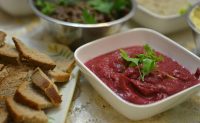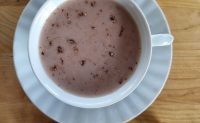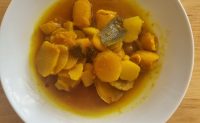White lace: What to do with elder tree flowers?
By Eyal Shpringer
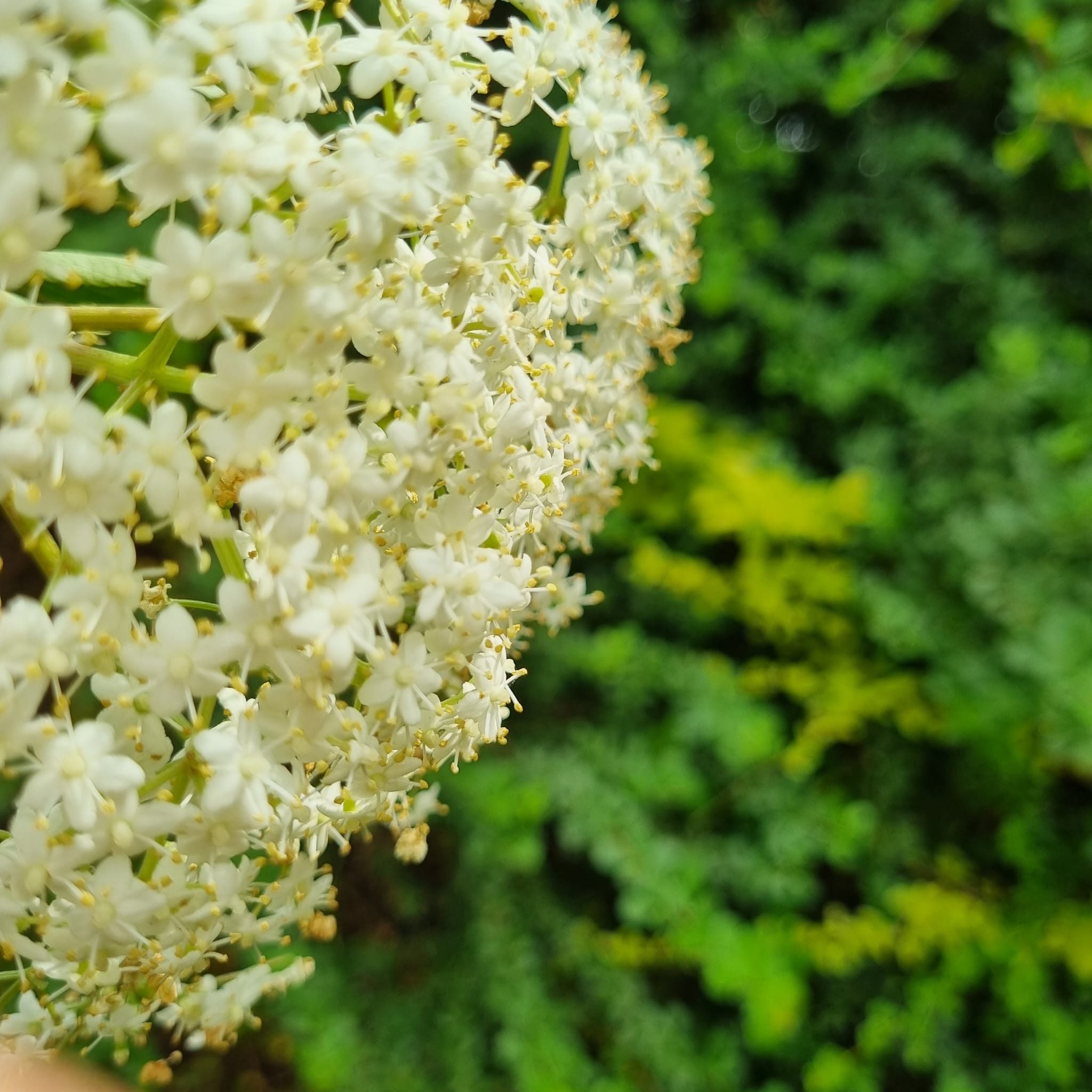
What a coincidence that nature conveys us.
It is precisely at the end of spring and the height of summer, when many of us are dealing with various respiratory symptoms, that elder tree (Sambucus nigra) blooms: white, small, delicate flowers like white lace, whose primary therapeutic use is to support the respiratory system.
How do you identify plants that can “communicate” with the lungs?
The shape of the elderberry flower hints at its effect on the respiratory tract: according to Chinese medicine, the white color is attributed to the lungs. Looking at the elderflower from a low angle, one can see it’s reminiscent of the structure of the lungs: many small white flowers resemble the lungs’ alveoli, connected by thin petioles that look like the structure of the airways. Indeed, a complex, multi-unit design reminiscent of the lungs characterizes many plants and medicinal substances that aid breathing, such as the fruit of the white mulberry tree, celery and parsley flowers, the structure of the honeycomb, and the flowers of the onion family. However, does such a complex structure make sense among plants exposed to spring and autumn winds? Does the intricate design allow for “risk diversification” in the face of the current and volatile weather that characterizes the transitional seasons?
Elder in Herbal Medicine
In herbal medicine, the elder is a gentle but effective plant for treating various respiratory disorders. When used correctly, the plant can soften, lubricate, and help treat the respiratory tract’s dry, hard, sticky, or abundant mucus. Therefore, elder flowers are frequently used to treat dry cough, respiratory irritation, allergy, and sinusitis. The plant also treats more acute conditions, such as high fever when sweating, and mild diuretic effects are needed.
Elderflowers contain various active substances responsible for the diverse effect on the respiratory tract. In addition, aromatic compounds found in the flowers contribute to the drying and antiseptic effect. These compounds are expressed in a short plant infusion or by extracting flowers in an alcoholic medium (tincture). Cooking the flowers produces more mucilaginous substances such as pectin, which may be suitable for soothing dry conditions or severe mucus in the respiratory tract.
Elderflower also stimulates and balances immune system activity and has antiseptic and antiviral activity.
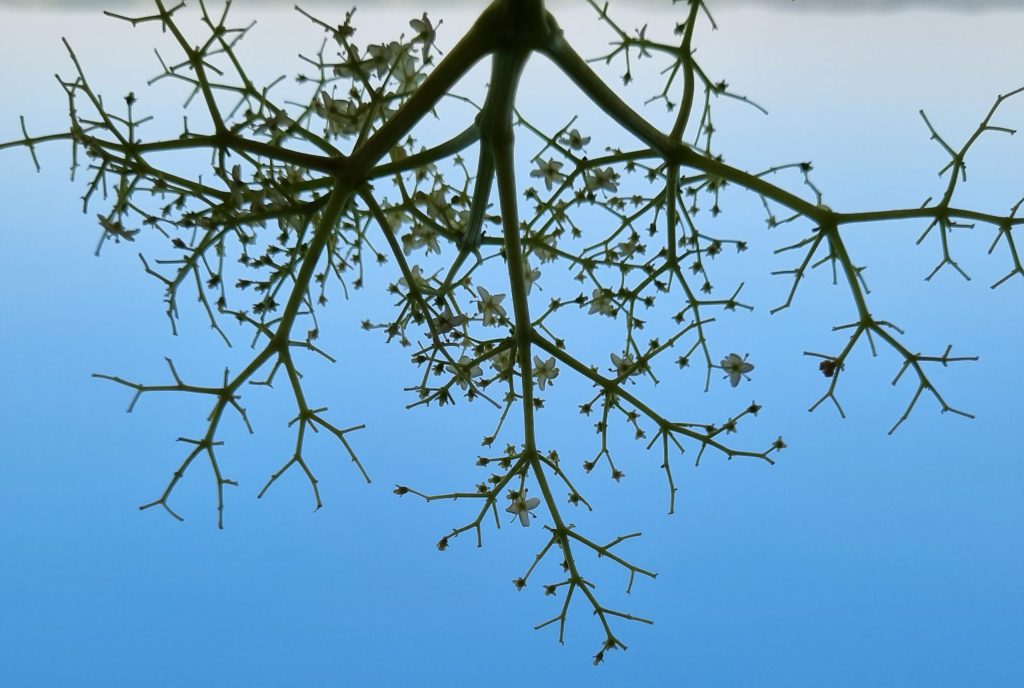
The simplest way to use elderflowers
The simplest way to use the flowers is by infusing the fresh or dried flowers: about a teaspoon to a tablespoon per glass of water several times a day. In Europe, where there is a long-established tradition of using the plant, elderberry flowers and fruits are incorporated into various sweet foods and beverages. These include wines, liqueurs, “elderberry sugar” soaked in the delicate aroma of the flower, jams or cordial, a refreshing drink that contains the flower essence.
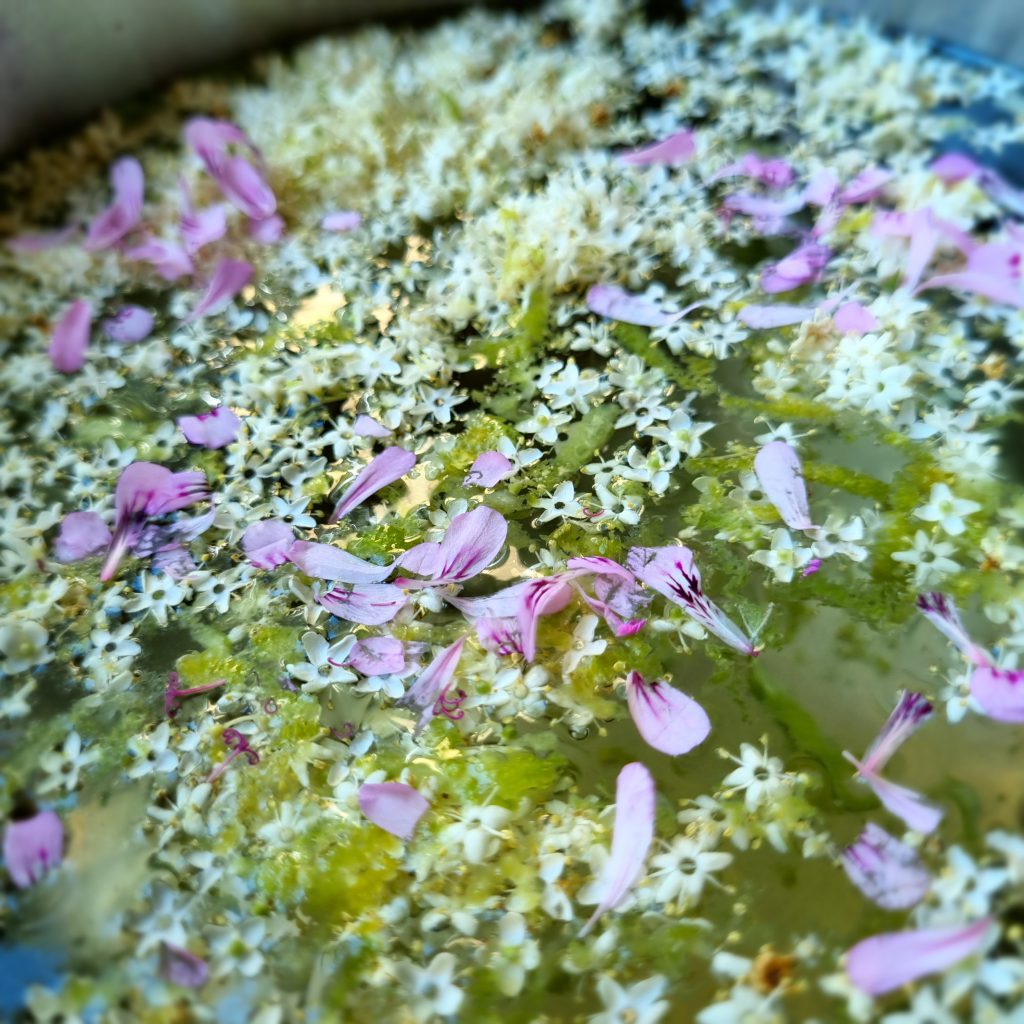
The “Elder tree Mother” who protects the house
In medieval Danish and Anglo-Saxon myths, the elderberry is considered a sacred tree attributed to the “mother of elderberry” goddess. The “mother of elderberry” gave each part of the tree different healing properties. Elderberry planted near the house was a virtue for protecting the household members. This goddess can also inflict punishment if her gifts provided by the elder tree are taken without proper prayer and gratitude.
The Harry Potter book series also expresses the magical qualities attributed to the elderberry, associated with motherhood and protection. The young wizard’s life is saved in the books thanks to his mother’s love, who protected him by sacrificing her own life. After that, the young wizard uses an elderberry wand that helps him to win over a dark wizard.
Much more can be said about elderberry: other legends associated with it, medicinal properties of different plant parts, and other clinical indications for the plant in pregnancy, allergies, diabetes, and urinary tract diseases.
Eyal Shpringer, A Chinese medicine practitioner and a clinical herbalist specializing in Chinese nutrition and traditional nutritional approaches. Eyal holds a master’s degree in research of East Asian medicines. Since 2007 he has been teaching a postgraduate training program in Chinese and oriental nutrition according to the TEF method and other courses and workshops for practitioners. Eyal co-authored the bestselling book Cooking for Life: A Traditional Nutrition Cookbook for Cancer Patients (Hebrew).
Did you find the recipe interesting? Do you want to continue studying with me?
You are invited to join me on my Instagram page and the Traditional Nutrition and Medicine Facebook group.
